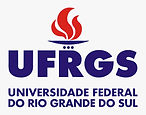
Welcome!
Welcome to the website dedicated to the research project Sb-RECMEMTEC. Our main objective is to achieve a sustainable copper production, eliminate industrial processes, and minimize environmental and social impacts.
Sb-RECMEMTEC
The international scientific consortium involved in our project is represented by the following organizations:
Federal University of Rio Grande do Sul (Brazil)
University of Santiago do Chile (Chile)
The production of high purity copper has been increasingly challenging since the ores purity gradually decreases after several decades of intensive mining. One of the major concerns in the pyrometallurgical and hydrometallurgical routes of copper production is the presence of some metal impurities in the ores. To minimize their effects during copper manufacturing, separation processes, such as ion‑exchange resins and solvent extraction, are applied to purify the electrolytes, for example, in the electrorefining stage. However, this practice results in the loss of valuable metals such as antimony (Sb), which has been listed as one of the 27 Critical Raw Materials by the European Commission. Thus, there has been a growing need for finding alternative methods that are technically and economically viable for purifying copper electrolytes and recovering antimony. Some of the most promising techniques that may be used for this purpose are the electromembrane processes, such as electrodialysis (ED) and electro‑electrodialysis (EED). Both stand out since they are clean technologies that allow the extraction and recovery of antimony from copper electrolytes and do not require additional chemicals, favoring a circular economy.
In this research project, we evaluate the use of ED and EED to recover antimony from wastes and effluents generated in the pyrometallurgical processing of copper sulfide minerals and in the hydrometallurgical treatment of low copper content mixed minerals. Different routes involving the electromembrane processes are considered in our project. In some routes, ED and EED are complementary methods to the conventional ones such as ion-exchange resins and solvent extraction. In other routes, ED and EED replace the conventional methods used to concentrate the solution before the electrowinning process.
Studies on ion transport across the membranes will also be conducted in our project by chronopotentiometry and electrochemical impedance spectroscopy. Membranes prepared by our research groups will be used in the tests of electrodialysis, electro-electrodialysis, chronopotentiometry and electrochemical impedance spectroscopy, in addition to commercial membranes. To guarantee the viability of the electro-electrodialysis, studies on cyclic voltammetry will be conducted using a rotating disc electrode; the results will be useful to understand the kinetics of the deposition of each species on the electrode.
Lastly, our project will allow the achievement of a copper production with less environmental impact, the reduction of the generation of effluents and wastes, and the maximization of metals recovery from mining tailings. Representations of our objectives are shown in the figures below. More specific information on the project is present in the Partners Section of this website.







